- Home
- Tom Clancy
Airborne: A Guided Tour of an Airborne Task Force Page 5
Airborne: A Guided Tour of an Airborne Task Force Read online
Page 5
Lightweight Equipment
So far, most of what I have shown you has to do with the delivery of paratroops and their gear to a crisis zone. This is the essence of airborne warfare, and most of the training and hard work go into getting to where you want to deploy. Without the proper equipment and trained personnel to operate it, though, dropping people and stuff onto a target defended by an enemy makes little sense. The problem is that transport aircraft can only carry so much in the way of troopers, equipment, and supplies. Just as importantly, all those things must fit inside the aircraft, and not weigh more than the plane can lift. Therefore, airborne forces around the world constantly strive to develop equipment and weapons that are lightweight and compact, with enough hitting or capability power to be effective in their given missions.
The Germans were early leaders in airborne equipment. Their cultural mania for precision and function helped them produce some of the most interesting tools and weapons ever carried by paratroopers anywhere. This included lightweight mortars and machine guns, as well as small field and antitank guns. Their original paratrooper knife is still considered a classic among warriors around the world. The Germans even pioneered the use of lightweight shaped and demolition charges, which they employed with great effect during the assault on the Belgian fort at Eben Emael (May 1940). They also produced light tanks (as did the British) which could be carried by large gliders.
As other countries started to develop their own airborne units, they too began to develop specialized equipment. America was no exception. Yankee ingenuity was quickly brought to bear, and results came rapidly to the battlefields of World War II. The Willys Jeep was undoubtedly the greatest American contribution. For the first time, airborne units had a level of mobility and hauling power once they were on the ground.5 Small enough to be carried by a standard Waco or Horsa glider, the jeep could tow small pack howitzers or antitank guns, carry machine-gun and bazooka teams, or just allow a unit commander to rapidly move around the battlefield with his radio gear.
A trooper from the 82nd Airborne Division stands watch near a fighting position during Operation Desert Shield in 1990. A brigade from the 82nd was the first American ground unit to enter Saudi Arabia following the invasion of Kuwait.
OFFICIAL U.S. ARMY PHOTO
The end of World War II brought the beginning of the nuclear age and the Cold War. The introduction of nuclear weapons to the battlefield gave many military leaders the feeling that infantry forces in general, and airborne forces in particular, might become obsolete. Other leaders saw new opportunities, though, and concepts for improving airborne firepower and equipment were quick in coming. Perhaps the most impressive of these were recoilless rifles (spin-stabilized antitank and artillery projectiles launched from tubes). What made these so special was that they were lightweight and compact enough to carry on the back of a jeep. For the first time, airborne troopers had a weapon that would allow them to defeat the heaviest armor on the battlefield, albeit with a serious risk to the health of the recoilless rifle crews!
The revolution in compact solid-state electronics and lightweight materials has proven to be the key to keeping airborne forces credible over the past forty years or so. At first, it was seen in the production of truly reliable and lightweight radio equipment. From this humble start, though, came the development of a whole new generation of weapons and equipment for airborne and other infantry forces. Wire-guided antitank guided missiles (ATGMs) like the Russian AT-2 Sagger and the U.S. TOW brought parity between infantry and armor forces on the battlefield in the 1970s. At the same time, the first man-portable surface-to-air missiles like the Soviet SA-7 Grail and the famous Stinger gave infantry a real defense against aircraft. In the early 1990s, man-portable satellite communications and navigation equipment was commonly used in the Persian Gulf and Panama by the 82nd Airborne Division. Today, with microcomputer brains, a new generation of “brilliant” weapons like the Javelin ATGM is going to give airborne forces new credibility on the battlefield.
If there is a single major shortcoming to our airborne forces today, it is the lack of an air-dropable armored weapons system. Airborne forces have always feared the power of mechanized units more than almost any other threat on the modern battlefield. Every paratrooper’s nightmares include the memory of what happened to the British 1st Airborne Division during Operation Market Garden in September 1944. Planning to seize a pair of bridges over the Rhine River, the division wound up landing on top of a pair of SS Panzer divisions, and was chopped to pieces. To prevent a recurrence of the Arnhem disaster, the airborne forces of many nations have developed light armored vehicles to help defend against enemy armor. Today, the lack of a replacement for the M551 Sheridan light tank has left a huge gap in the combat power of the 82nd Airborne Division.6 A well-run program to produce a new system, the M-8 Armored Gun System, was canceled in 1996 to help pay for several overseas contingencies including Bosnia-Herzegovina. The interim solution to the heavy armor threat is a system called LOSAT, which will be mounted on a High Mobility, Multipurpose Wheeled Vehicle (HMMWV) chassis. LOSAT is a hypervelocity (faster than Mach 5) missile, which will defeat enemy tanks by punching through armor with a long rod of depleted uranium. In fact, look for more and more systems used by the airborne to be mounted on HMMWVs. They are reliable, can be easily fitted into any transport aircraft, and can carry a good payload. The perfect combination for the airborne’s requirements.
Still, there is more to combat power than the size of a gun or the range of a missile. Like the men who lead the U.S. Marines, the leadership of the 82nd Airborne still consider their most dangerous weapon the individual airborne trooper with his personal weapons. There is an acronym that they like to use, LGOP, that says it all. LGOP stands for “little groups of paratroopers,” and is a core philosophy within the 82nd. It means that even if there are no officers, and nothing but personal weapons, LGOPs are expected to form, and fight their way to the objective. That determination is echoed in the Airborne war cry of “All the way!”
Operations: The Modern Airborne Assault
Airborne operations, even after more than six decades of practice and combat experience, remain some of the most difficult and dangerous attempted by conventional military forces. Even amphibious operations against a hostile shore are relatively safe and simple by comparison. Yet it is the ever-looming threat of an airborne assault that gives the troops of units like the American 82nd Airborne and the British 5th Paras such credibility with their opponents. But just how would such a mission be undertaken, and how would it be executed?
The first element of any airborne operation is a crisis. A really bad one. A U.S. President only dispatches airborne forces from the 82nd Airborne or one of the Ranger battalions if they are really serious about sending a message and committing American interests and forces to a situation. This is especially important, because the sending of an airborne task force into a crisis area means that you are committed to supporting them with follow-on forces, or at least bringing them home sometime in the future. Paratroops are basically just light infantry, and are going to need continuing support in even low-intensity-combat (LIC) situations. You also are committing your nation and Administration to a course of action that may not be reversible. For this reason, presidents think long and hard before they send the word to launch the airborne on a mission.
A “chalk” of student paratroops boards an Air Force C-130 Hercules prior to a training jump at Fort Benning, Georgia.
JOHN D. GRESHAM
President George Bush faced such a decision on August 8th, 1990, when he dispatched the first elements of various units to defend Saudi Arabia in what became Operation Desert Shield. These units included F-15s from the 1st Tactical Fighter Wing, the USS Independence (CV-61) carrier battle group, Maritime Prepositioning Squadron Two (MPSRON-2), and the 7th Marine Expeditionary Brigade (MEB). But leading them all into the desert north of the ports, airfields, and oilfields was the ready 2nd Brigade (it was then built aro
und the 325th Airborne Infantry Regiment) of the 82nd Airborne Division. Flown in on military and charter aircraft, they faced the Iraqis for the first critical weeks, while other Allied forces came in behind them.
For President Bush, the decision to commit the 82nd was the point of no return. If Iraq had tried to invade Saudi Arabia in those early days, it would have been a thin line of paratroopers and Marines, backed up by the limited supply of airpower of General Chuck Horner (then the commander of the U.S. Central Command Air Forces, CENTAF). Whether or not this thin line of units could have stopped an Iraqi onslaught is still a point of discussion among military analysts today. But if they had failed, tens of thousands of Americans would have been in jeopardy, with few escape routes. Even now, the troopers from 2nd Brigade who were first into Saudi Arabia refer to themselves as the “speedbumps,” out of a morbid realization that they might have been just that for the Iraqis. This lack of fallback options is one of the things that make airborne operations so risky. If you cannot rapidly relieve, reinforce, resupply, or evacuate the airborne forces, they will likely be chopped to pieces by superior enemy forces.7
This said, let us assume that a crisis has erupted that requires the rapid insertion of U.S. forces. The President and the National Command Authorities have decided to commit ground units to the scene, and time is of the essence. An aircraft carrier battle group is headed towards the confrontation. Marine units are moving into the area, with an MPSRON/MEB team moving up to reinforce them. It may take days for the ships transporting the Marines and the carrier group to arrive on the scene. Several of the Air Force’s composite combat wings are standing by, waiting for a place to land and operate in the crisis area. Unfortunately, no such base yet exists. This is a situation where hours count, and the need to show action to the world is critical. What is needed is an airborne strike to take the airfield and port facilities that will allow the rest of the U.S. forces to arrive and stabilize the situation.
A call to the XVIII Airborne Headquarters at Fort Bragg, North Carolina, is all it takes to get the ball rolling. Within minutes of receiving its own call from XVIII Airborne Corps, the 82nd Airborne Division issues orders to the alert brigade which is standing by. When I say standing by, I mean that everyone in the alert brigade is on base or at home, only a phone call or beeper page away from being recalled. Only eighteen hours from a “cold” (i.e., no-notice) start, they can put the first combat element of the division (a reinforced airborne parachute infantry battalion) into the air. With a bit more notice, even larger units like an entire brigade or the whole division can be airlifted at once into a combat zone.
This is what occurred in October of 1994, when all three of the 82nd’s brigades were in the air simultaneously during Operation Uphold Democracy. The plan had been to have the 82nd take the whole nation of Haiti away from strongman General Raoul Cedras in a single stroke from the sky. The lead elements of the airborne assault were only minutes from the “point of no return” when the final negotiations for the resignation and exile of General Cedras were completed by a team that included former President Jimmy Carter, Senator Sam Nunn, and General Colin Powell. This resulted in a mass recall and redeployment of aircraft and personnel to support the peacekeeping mission that followed.
Once the basic airborne force is assembled, the next issue is transportation. Will the entry be into a permissive (military for “friendly”) or hostile environment? The answer to this question determines how fast the force can be delivered. If the landing area is “permissive,” then the airborne task force can be landed via chartered airliners and airlift aircraft without the need for a parachute drop. This is how the 2nd Brigade arrived in Saudi Arabia in August of 1990. All they needed was the international airport at Dhahran, and a few hours to off-load, organize, and head north into the desert. Landings into hostile territory are a bit more involved. Should the operation require a forced entry, the airborne task force would have to make plans for a full-blown parachute assault into hostile territory. This is a well-practiced, though risky, operation that requires the full eighteen hours to pull together.
However the task force enters the operating area, transportation will be the responsibility of the U.S. Air Force’s fleet of airlift aircraft, drawn from the Air Mobility Command’s C-130s, C-141s, C-5s, and C-17s. As a general rule, the C-130s are used when the flying distance to the crisis zone is within two thousand miles. This was the case in 1989 when the U.S. invaded Panama during Operation Just Cause. These C-130s would likely consist of a mix of active duty, Air National Guard, and USAF Reserve aircraft, including those of the 23rd Wing based at nearby Pope AFB, North Carolina. Anything longer than a short hop around the hemisphere requires a fleet of four-engine jet transports. This is the specialty of AMC, which has forged a strong relationship with the units of XVIII Airborne Corps, particularly the 82nd Airborne. AMC maintains a ready pool of the big airlifters suitable for the lifting of an airborne battalion task force on eighteen hours’ notice from Pope AFB, North Carolina.
Now, let us suppose that the 82nd has put together an airborne task force (something between a reinforced battalion or brigade). The airlift assets are on the way to Pope AFB, and you are waiting to get going. Even before the first paratroopers load onto the transport aircraft, there will be a huge amount of planning and preparation going on. Assuming that a parachute assault is required, the airborne task force commander is going to need a place to land. That place is called a drop zone (DZ). There are many issues involved in the selection of a proper DZ, all of which require a bit of subjective judgment and analysis by the task force staff. You need to look for a piece of clear land, at least a mile long. The required size for a DZ is dictated mostly by the kind of aircraft dropping the paratroops. Obviously, a C-130 dropping thirty to forty troopers can use a shorter DZ than a C-141, which carries over a hundred. The DZ should also be clear of trees, brush, and large rocks. In addition, the DZ has to be defensible, because it will become the entry point for follow-on reinforcements, equipment, and supplies. Much as the Marines fight to take and hold a beachhead, the paratroopers need to work hard to establish what they call an “airhead.”
The more popular kinds of DZs include airfields and international airports. These are useful for airborne forces because they are perfectly clear, easy to find, and can provide an excellent fly-in entry point for supplies and reinforcements. The downside of trying to take such a facility, though, is that the bad guys in the crisis area already know this, and will likely defend such installations quite vigorously. This is what happened when the German 7th Fallschirmjäger Division attacked Maleme Airfield during the invasion of Crete in 1941. The British defenders put up stiff resistance, and almost won the battle. Only a near-suicidal commitment of reinforcement Fallschirmjägers and transport aircraft allowed the Germans to prevail. The Crete invasion tore the guts out of the German Fallschirmjäger force, and taught everyone else in the business some valuable lessons. One other little problem: Runways are lousy places to land paratroopers because the hard surfaces cause landing injuries. A lot of the paratroopers who jumped into Grenada in 1983 wound up breaking legs and spraining backs and ankles on the hard surface of the runway at Port Salinas. Whatever the DZ, though, the paratroopers have a basic philosophy of dropping on top of their objectives whenever it is possible. This was a lesson that was learned the hard way during airborne operations in Europe back in World War II. For this reason, paratroopers know to take what they want quickly, and get relieved fast.
Once you have picked out a DZ, the next problem is making sure that it is a safe place to drop onto. This means getting eyes onto the ground nearby. Fortunately, the Army has a number of personnel, from special forces and Ranger units to the 82nd’s own pathfinders, who can scout a DZ and make sure it is a good place to land. Should a DZ prove suitable, then there is the problem of making sure that the transport planes with their loads of personnel, equipment, and supplies can actually find it. Most airborne operations these days take place
under the cover of darkness, and in weather conditions that would be considered insane by some professional soldiers. During Operation Royal Dragon (a large joint international training exercise at Fort Bragg) in 1996, all of the initial drops took place in heavy fog and rain. Despite this, injuries were few and not one fatality was suffered by the over five thousand British and American paratroopers who took part. One of the reasons for this success is the array of navigation and homing equipment carried by the pathfinders to mark the DZs for the transport crews. The coming of GPS-based navigation aids may make ground-based beacons a thing of the past. For the next few years, though, the pathfinders will still need to be on the ground waiting to guide the paratroopers into the DZ.
Back at Fort Bragg, the troopers of the first fly-out unit are sequestered into a special holding area prior to being bused over to Pope AFB. Here the troopers spend their time preparing equipment, and themselves mentally, for what is ahead. When the time to load up comes, they board buses which take them over to what is called “Green Ramp” at Pope AFB. This is a holding area at one end of the field which is equipped with special benches for the troopers to sit on with all of their equipment and parachutes loaded. The Green Ramp facility is not terribly green, and is decidedly decrepit, with concrete floors and a few soft-drink machines and water fountains. However, for the troopers of the 82nd, it frequently is the last piece of America that they see before a deployment.

 Changing of the Guard
Changing of the Guard Clear and Present Danger
Clear and Present Danger Hounds of Rome
Hounds of Rome Breaking Point
Breaking Point Tom Clancy's Jack Ryan Books 7-12
Tom Clancy's Jack Ryan Books 7-12 Full Force and Effect
Full Force and Effect The Archimedes Effect
The Archimedes Effect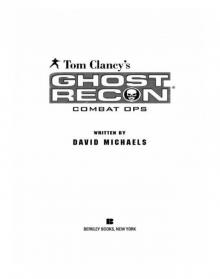 Combat Ops
Combat Ops Into the Storm: On the Ground in Iraq
Into the Storm: On the Ground in Iraq Under Fire
Under Fire Point of Impact
Point of Impact Red Rabbit
Red Rabbit Rainbow Six
Rainbow Six The Hunt for Red October
The Hunt for Red October The Teeth of the Tiger
The Teeth of the Tiger Conviction (2009)
Conviction (2009)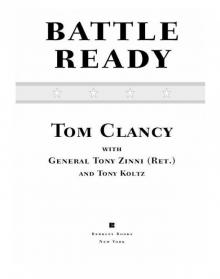 Battle Ready
Battle Ready Patriot Games
Patriot Games The Sum of All Fears
The Sum of All Fears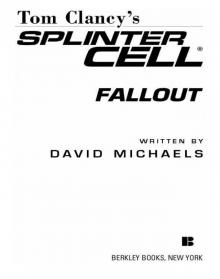 Fallout (2007)
Fallout (2007) Red Storm Rising
Red Storm Rising The Cardinal of the Kremlin
The Cardinal of the Kremlin Executive Orders
Executive Orders Lincoln, the unknown
Lincoln, the unknown Threat Vector
Threat Vector The Hunted
The Hunted Shadow Warriors: Inside the Special Forces
Shadow Warriors: Inside the Special Forces End Game
End Game Special Forces: A Guided Tour of U.S. Army Special Forces
Special Forces: A Guided Tour of U.S. Army Special Forces Locked On
Locked On Line of Sight
Line of Sight Tom Clancy Enemy Contact - Mike Maden
Tom Clancy Enemy Contact - Mike Maden Fighter Wing: A Guided Tour of an Air Force Combat Wing
Fighter Wing: A Guided Tour of an Air Force Combat Wing Springboard
Springboard Line of Sight - Mike Maden
Line of Sight - Mike Maden EndWar
EndWar Dead or Alive
Dead or Alive Tom Clancy Support and Defend
Tom Clancy Support and Defend Checkmate
Checkmate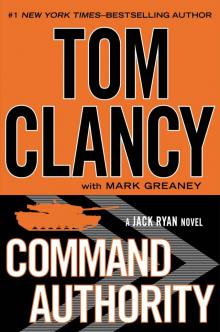 Command Authority
Command Authority Carrier: A Guided Tour of an Aircraft Carrier
Carrier: A Guided Tour of an Aircraft Carrier Blacklist Aftermath
Blacklist Aftermath Marine: A Guided Tour of a Marine Expeditionary Unit
Marine: A Guided Tour of a Marine Expeditionary Unit Commander-In-Chief
Commander-In-Chief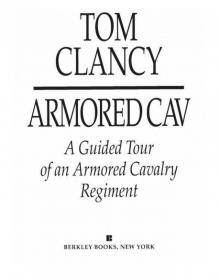 Armored Cav: A Guided Tour of an Armored Cavalry Regiment
Armored Cav: A Guided Tour of an Armored Cavalry Regiment Tom Clancy's Jack Ryan Books 1-6
Tom Clancy's Jack Ryan Books 1-6 The Ultimate Escape
The Ultimate Escape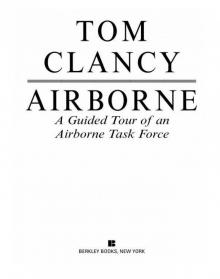 Airborne: A Guided Tour of an Airborne Task Force
Airborne: A Guided Tour of an Airborne Task Force Debt of Honor
Debt of Honor Cyberspy
Cyberspy Point of Contact
Point of Contact Operation Barracuda (2005)
Operation Barracuda (2005) Choke Point
Choke Point Power and Empire
Power and Empire Every Man a Tiger: The Gulf War Air Campaign
Every Man a Tiger: The Gulf War Air Campaign Endgame (1998)
Endgame (1998) EndWar: The Missing
EndWar: The Missing Splinter Cell (2004)
Splinter Cell (2004) The Great Race
The Great Race True Faith and Allegiance
True Faith and Allegiance Deathworld
Deathworld Ghost Recon (2008)
Ghost Recon (2008) Duel Identity
Duel Identity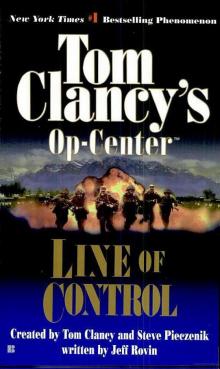 Line of Control o-8
Line of Control o-8 The Hunt for Red October jr-3
The Hunt for Red October jr-3 Hidden Agendas nf-2
Hidden Agendas nf-2 Acts of War oc-4
Acts of War oc-4 Ruthless.Com pp-2
Ruthless.Com pp-2 Night Moves
Night Moves The Hounds of Rome - Mystery of a Fugitive Priest
The Hounds of Rome - Mystery of a Fugitive Priest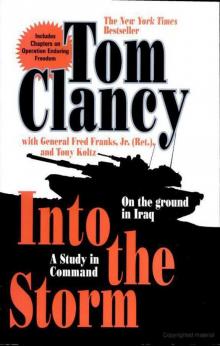 Into the Storm: On the Ground in Iraq sic-1
Into the Storm: On the Ground in Iraq sic-1 Threat Vector jrj-4
Threat Vector jrj-4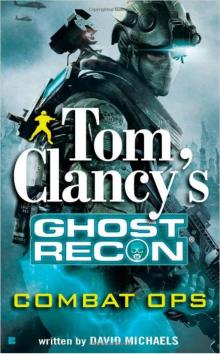 Combat Ops gr-2
Combat Ops gr-2 Virtual Vandals nfe-1
Virtual Vandals nfe-1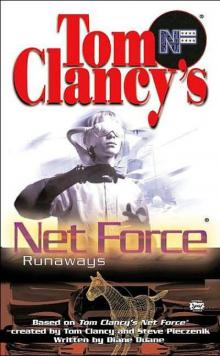 Runaways nfe-16
Runaways nfe-16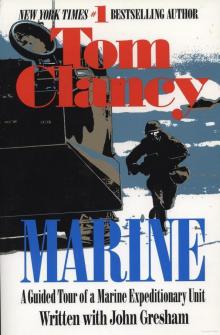 Marine: A Guided Tour of a Marine Expeditionary Unit tcml-4
Marine: A Guided Tour of a Marine Expeditionary Unit tcml-4 Shadow Warriors: Inside the Special Forces sic-3
Shadow Warriors: Inside the Special Forces sic-3 Jack Ryan Books 1-6
Jack Ryan Books 1-6 Cold Case nfe-15
Cold Case nfe-15 Changing of the Guard nf-8
Changing of the Guard nf-8 Splinter Cell sc-1
Splinter Cell sc-1 Battle Ready sic-4
Battle Ready sic-4 The Bear and the Dragon jrao-11
The Bear and the Dragon jrao-11 Fighter Wing: A Guided Tour of an Air Force Combat Wing tcml-3
Fighter Wing: A Guided Tour of an Air Force Combat Wing tcml-3 Patriot Games jr-1
Patriot Games jr-1 Jack Ryan Books 7-12
Jack Ryan Books 7-12 Mission of Honor o-9
Mission of Honor o-9 Private Lives nfe-9
Private Lives nfe-9 Operation Barracuda sc-2
Operation Barracuda sc-2 Cold War pp-5
Cold War pp-5 Point of Impact nf-5
Point of Impact nf-5 Red Rabbit jr-9
Red Rabbit jr-9 The Deadliest Game nfe-2
The Deadliest Game nfe-2 Springboard nf-9
Springboard nf-9 Safe House nfe-10
Safe House nfe-10 EndWar e-1
EndWar e-1 Duel Identity nfe-12
Duel Identity nfe-12 Deathworld nfe-13
Deathworld nfe-13 Politika pp-1
Politika pp-1 Rainbow Six jr-9
Rainbow Six jr-9 Tom Clancy's Power Plays 1 - 4
Tom Clancy's Power Plays 1 - 4 Endgame sc-6
Endgame sc-6 Executive Orders jr-7
Executive Orders jr-7 Net Force nf-1
Net Force nf-1 Call to Treason o-11
Call to Treason o-11 Locked On jrj-3
Locked On jrj-3 Against All Enemies
Against All Enemies The Sum of All Fears jr-7
The Sum of All Fears jr-7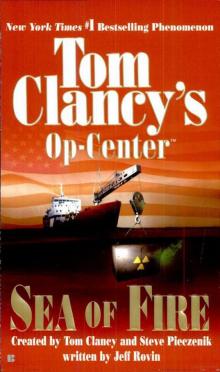 Sea of Fire o-10
Sea of Fire o-10 Fallout sc-4
Fallout sc-4 Balance of Power o-5
Balance of Power o-5 Shadow Watch pp-3
Shadow Watch pp-3 State of War nf-7
State of War nf-7 Wild Card pp-8
Wild Card pp-8 Games of State o-3
Games of State o-3 Death Match nfe-18
Death Match nfe-18 Against All Enemies mm-1
Against All Enemies mm-1 Every Man a Tiger: The Gulf War Air Campaign sic-2
Every Man a Tiger: The Gulf War Air Campaign sic-2 Cybernation nf-6
Cybernation nf-6 Support and Defend
Support and Defend Night Moves nf-3
Night Moves nf-3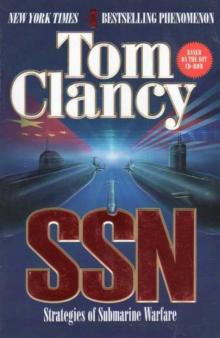 SSN
SSN Cutting Edge pp-6
Cutting Edge pp-6 The Cardinal of the Kremlin jrao-5
The Cardinal of the Kremlin jrao-5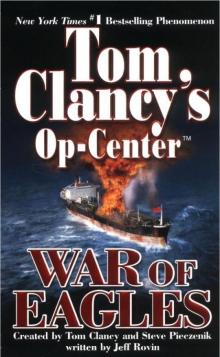 War of Eagles o-12
War of Eagles o-12 Op-Center o-1
Op-Center o-1 Mirror Image o-2
Mirror Image o-2 The Archimedes Effect nf-10
The Archimedes Effect nf-10 Teeth of the Tiger jrj-1
Teeth of the Tiger jrj-1 Bio-Strike pp-4
Bio-Strike pp-4 State of Siege o-6
State of Siege o-6 Debt of Honor jr-6
Debt of Honor jr-6 Zero Hour pp-7
Zero Hour pp-7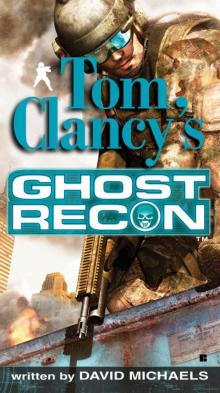 Ghost Recon gr-1
Ghost Recon gr-1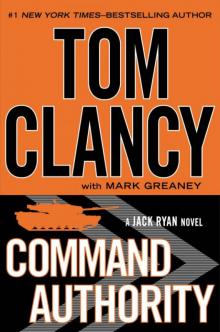 Command Authority jr-10
Command Authority jr-10 Tom Clancy's Power Plays 5 - 8
Tom Clancy's Power Plays 5 - 8 Checkmate sc-3
Checkmate sc-3 Breaking Point nf-4
Breaking Point nf-4 Gameprey nfe-11
Gameprey nfe-11 The Hunted e-2
The Hunted e-2 Hidden Agendas
Hidden Agendas Divide and Conquer o-7
Divide and Conquer o-7